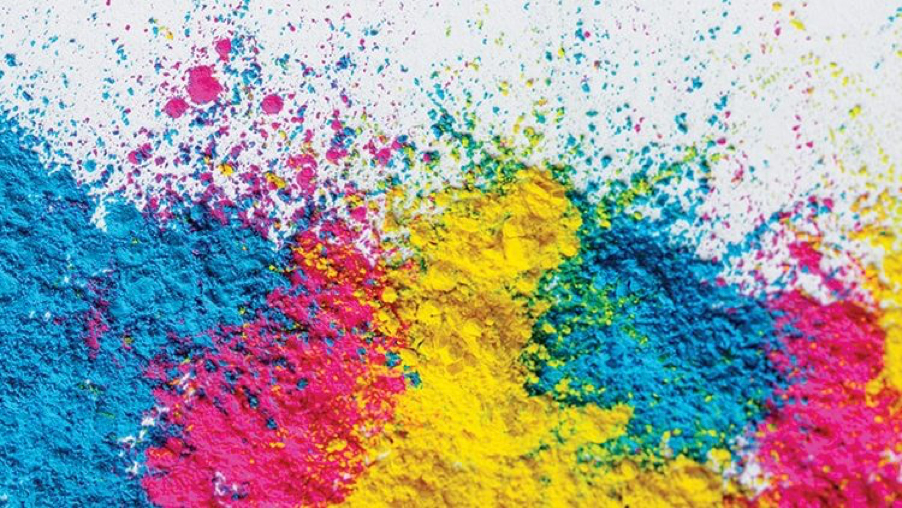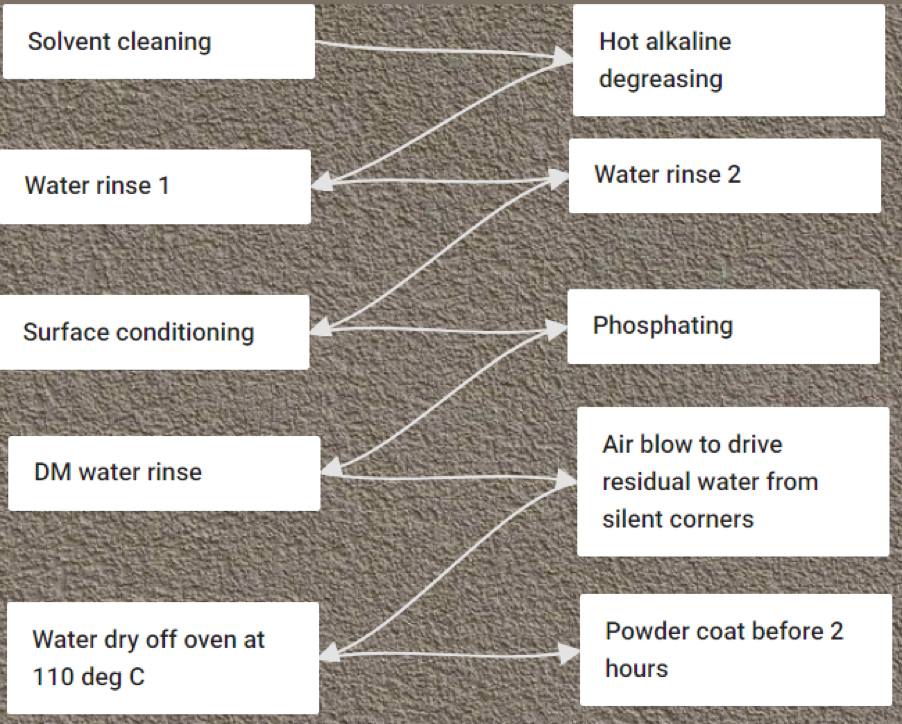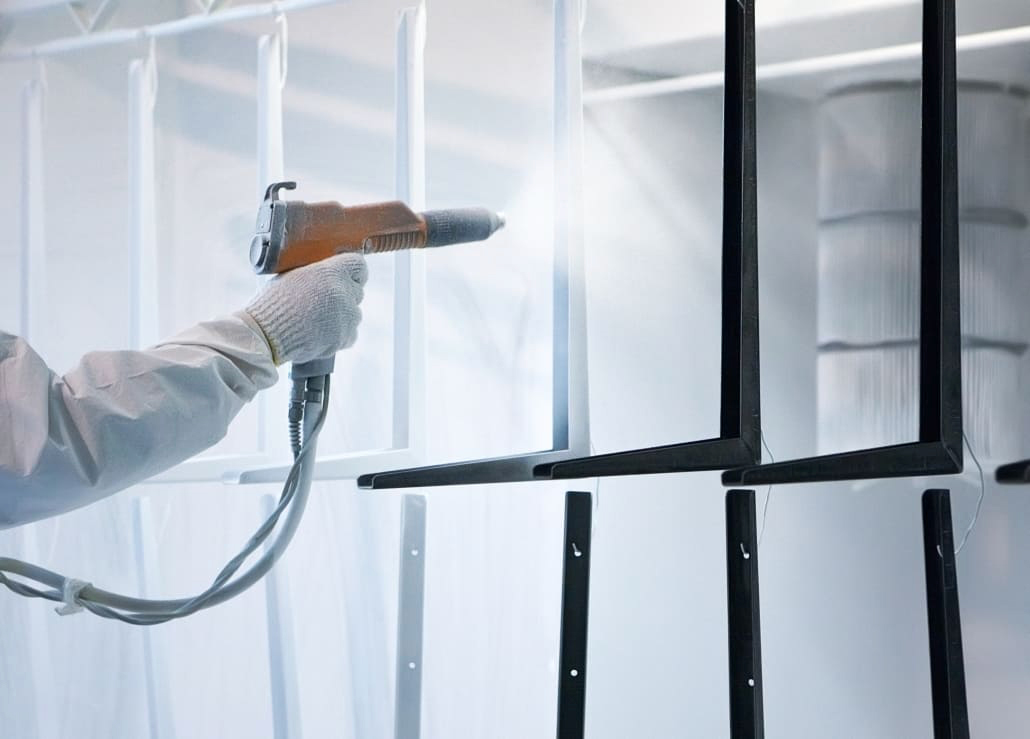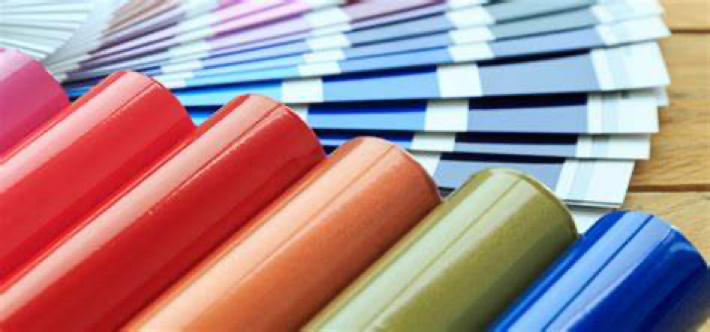INTRODUCTION
Metal fabricating can be a complex process. There are a series of steps that are taken to make sure metal parts prepared in the way you want. However, surface protection is an essential procedure in metal working. There are many methods to enable the surface protection of the metal. In all the procedures, the common is purpose of protecting the surface from oxidation or abrasion. Beyond the purpose of protection, there are few surface treatment which actually meant for aesthetic appearance of the metal and fabricated parts. When customers ask for their metal parts to come in a specific colour, you need to go for a colourful and well finished surface of customer’s delight. And your one of the solutions for an aesthetically superior surface is powder coating.

POWDER
Powder coating is a different way to paint your metal parts. Rather than using traditional metal paint, the colour is sprayed onto the metal’s surface with an electrical charge and then cured with heat. It provides your metal parts with a high-quality finish. You can also use it on various surfaces, like plastic and concrete.
There are two different types of powder coating; thermoplastic and thermoset. Thermoplastic powder coating is more for synthetic materials that aren’t suitable for high heat.
However, they have good coating chemical resistance. Some standard thermoplastic powders include:
- Nylon
- Polyester
- Polyolefin
- Acrylic
- Epoxy
- Epoxy-polyester hybrid
As you can see, various types of powders can be used for your metal parts. But consult with a professional powder coating service to figure out the best powder for your project
HOW DOES POWDER COATING WORK?
Powder coating is a mixture of polymer resin, flow modifiers, levelling agents, and other additives. The ingredients are melted, mixed, cooled, and then finally ground into powder. For the application process, we use an electrostatic paint sprayer. It provides a positive electrical charge on the powder, which gets applied to your metal parts. Due to chemical bonding, the powder coating gets stronger once it’s cured because the bonds solidify.
POWDER COATING PROCESS
The powder coating process requires three basic steps, regardless of the type of powder used: preparation, or pre-treatment, application, and curing. Here is an overview of each step.
Preparation:
Preparation is essential for successful powder coating. All dirt, oil, and debris get cleaned off the part in question since these could hinder powder adhesion in later steps. This preparation step could consist of several steps in itself, depending on the material in question and the initial state of the part. The first step is generally physical cleaning, where the part is scrubbed, sand-blasted, or washed using a high-pressure spray. This reliably removes most of the physical dirt that could be present on the part.

Often, metallic parts are chemically treated in processes called phosphating and chromating. Here, the metals are dipped in corrosive acids for a predetermined, concise time, after which they’re rinsed and dipped in phosphate or chromate solutions. This improves the subsequent bond between the metal and powder, improving the surface finish and product performance. The phosphate and chromate solutions used aren’t environmentally friendly. For this reason, many coating services have replaced them with titanium zirconium silanes, which offer similar corrosion resistance and powder adhesion properties. Heat-sensitive plastics and composite materials are often hydrophobic, have a low degree of wettability, and have low-energy surfaces. These aspects all negatively affect powder adhesion during the powder coating process. These materials undergo plasma treatment to overcome this challenge, which creates chemically active binding sites on the material’s surface. Now, this surface is wettable and hydrophilic, providing ideal conditions for powder adhesion.
Application:
Powder application varies slightly depending on the material being coated. Generally, one of three application methods is used: electrostatic gun, electrostatic fluidized bed, or electrostatic, magnetic brush.
Electrostatic Gun
When powder coating metal objects, the powder is usually sprayed onto the object using an electrostatic gun, also called a corona gun, after the most common nozzle configuration. Here, the metal part is electrically grounded, while the spray nozzle imparts a negative electrostatic charge to the powder particles. The particles are shot towards the metal, either mechanically or through compressed air. Once airborne, they’re accelerated by the electrostatic attraction between the negatively charged particles and grounded metallic surface. Various spray nozzle configurations are available, each suited to coating specific object shapes. This variety enables precise coating practices, minimizing waste and optimizing surface finish.
After coating, curing takes place – this is most commonly achieved through high heat. In some cases, the metallic part is heated before powder application. Here, the powder melts onto the surface, achieving a more uniform surface finish. When too much powder is applied in this manner, the powder could run down the surface, ironically creating a poor surface finish.
Electrostatic Fluidized Bed
A fluidized bed is essentially a tub of powder with air flowing through it. Aerated powder behaves like a fluid, which allows parts to be dipped into it. In a conventional fluidized bed, this part would be metallic and heated. When dipped into the bed, the powder melts and sticks to the part, after which conventional curing would take place.
An electrostatic fluidized bed is similar to a conventional fluidized bed, but it has more powder depth and an electrostatic charging medium added to the bed. This creates a cloud of electrostatically charged particles floating above the bed. The metallic part to be coated is grounded and passed through this cloud, causing the negatively charged particles to stick to its surface. This is followed by curing.
Electrostatic Magnetic Brush
Electrostatic magnetic brush, or EBM, coating is relatively new and works on similar principles as a copier machine. Here, the powder is applied to a flat surface using a roller. This application is highly accurate, allowing layer thicknesses between 5 and 100 micrometers, applied efficiently at great speed.
CURING
Curing differs depending on the type of powder used. Thermoplastic and thermoset powders both require heat to cure. Here, each powder requires exposure to a specific temperature for a set amount of time to attain the desired properties. Traditionally, thermoplastic powders were cured at 200֯C (390֯F) for ten minutes. Recently, a low-bake approach enabled adequate curing at 160֯C (320֯F) for ten minutes, decreasing production costs and rendering the process more environmentally friendly.
Since the low-bake approach necessitates the use of catalysts to ensure proper curing, they’re not as color-stable as their high-temperature cured counterparts.
UV, or ultraviolet, curing still requires heat for proper curing, but at far lower temperatures than thermoplastics and thermosets. UV powder coating curing times are far shorter than their traditional counterparts, requiring only one or two minutes at 110-130֯C (230-266֯F). UV powder coating applications use UV LED curing systems, which are more environmentally friendly than conventional curing ovens. Their high energy efficiency, paired with the low-temperature requirements and fast curing times of UV-cured powders, decrease production costs considerably compared to thermoplastic and thermoset applications.

POWDER COATING GUN
Typically, powder coating applications use one of two powder coating guns: the tribo gun or the electrostatic gun, also known as the corona gun. The corona gun is most commonly used and works on imparting a negative electrostatic charge to the powder particles. After receiving the charge, these particles are shot at the part to be coated through compressed air or mechanical action.
The corona gun has various nozzle configurations, enabling the user to easily coat surfaces in multiple configurations in any orientation. A downside of using the corona gun is its affinity for back ionization and the Faraday cage effect. Here, the charged powder particle fails to find a ground point on the surface to be coated and thus builds onto particles already stuck to the surface. This causes uneven coverage in what’s called the “orange peel effect.”
The tribo gun imparts a positive electrostatic charge to the powder particles through triboelectric friction. Here, the powder particles move through a Teflon tube inside the gun. Friction with this surface imparts the charge, which then causes the particles to be attracted to the grounded metal object to be coated. While the tribo gun requires a different powder type to the corona gun, it doesn’t suffer from the same weaknesses (back ionization and the Faraday cage effect).
POWDER COATING ADVANTAGES
Since its development in the 1940s, powder coating has become an industry standard for durable, long-lasting, attractive protection for metal and other surfaces, making them both look better and last longer. With numerous compatible materials and applications, powder coatings offer a variety of advantages over other techniques, including:
Versatility : Powder coatings can be applied by spraying or fluidized bed techniques, using a wide variety of plastic resins such as polyester, epoxy, polyolefin, nylon, vinyl etc. taking advantage of each material's specific features.
Multifunctional: Beyond offering long-lasting protection, powder coating materials add such benefits as abrasion resistance, chemical resistance, electrical resistance, reduced or increased friction, easy cleaning, impact resistance, or vibration deadening.
Durability: We’re not really sure why more people don’t use powder coating for their projects instead of paint. It comes with problems like fading and chipping, especially when they come in direct contact with sunlight.
Once your metals have been powder coated, it becomes highly resistant to wear and tear no matter what you put it through. You’ll no longer have problems with chips, scratches, or fading.
Due to its high-resistance capabilities, powder coating is perfect for metals that come in constant contact with sunlight and other environmental factors.
Longevity: A common question we get about powder coating is, “How long does a powder coat finish last?” The answer is roughly about 20 years (depending on some external factors). Since powder coating increases the durability of your metals, they are easy to maintain. That doesn’t mean they won’t get dirty; dust and other factors can decrease the aesthetic of your metals or prevent them from working.
You’ll only need to scrub your metals with some water, and the metal coating will remain intact. With this easy maintenance, you can use your parts for extended periods without worrying about damaging accumulating.

Cost effective: Whether you’re a business or a homeowner, you’re always looking to cut costs, and that’s where powder coating steps in. Since it has a quick application process, you’ll be able to cut down on labour costs, unlike traditional painting.
Also, powder coating has an extended shelf life, so you’ll be able to store it without any problems. Standard paint can expire, leaving your home or business with a foul smell.
So instead of wasting money buying new paint and doing the whole process over, save yourself the hassle by using powder coating instead.
Speedy: Offering a generally shorter curing time than dipping techniques, powder coating can shorten production time.
Attractive: Powder coatings can match any colour of the rainbow, and can include special effects from matte finishes and wrinkled or sandy textures to translucent, glittery, or veined looks. Many of these special effects could not be achieved with other coating techniques.
Coating thickness and Quality: Smoother, thicker coatings can be achieved with powder coating than by dipping or other plastic coating processes, and generally with more uniform thickness and appearance.
Eco friendly: A big reason why people prefer powder coating over painting is because of its eco-friendliness. Although the powder is sprayed onto a metal part, there aren’t any chemicals involved to make it stick.
The electrical charge makes sure the powder coating sticks, removing the need for solvents and adhesives. Any residual powder can be cleaned up quickly, unlike paint. Powder coating also doesn’t involve the use of volatile organic compounds (VOCs).
What is a VOC? They are gases that get emitted from certain chemicals we use, such as:
- Paint
- Cleaning products
- Varnishes
- Ink
VOCs are harmful to the environment and linger in the air, causing individuals to come in contact with air pollution. That’s why painting gets broken down into chunks. Since there are no volatile organic compounds in the dry powders used in powder coating, it is a better option for your metal parts. You won’t have to worry about inhaling any dangerous chemicals. So not only do you protect yourself, but you also reduce your carbon footprint and help the environment in the process. It’s a win-win.
CONCLUSION
Powder coating is a dry finishing process that uses finely ground particles of pigment and resin to give surface gloss levels and a consistent finish. It provides a more durable finish than traditional paint and is available in a wide variety of colours and finishes. If you are considering powder coating for your projects, you may need to spend lots of time getting the right expertise and experience to get the best results. But no worries, here at Vera, we offer professional support to you to achieve the most out of the powder coating process. Our team has years of experience in providing cost-effective surface finish solutions for our products, so you can be confident that your parts will look great and meet your expectations. Please contact: (+91) 90613 39977

